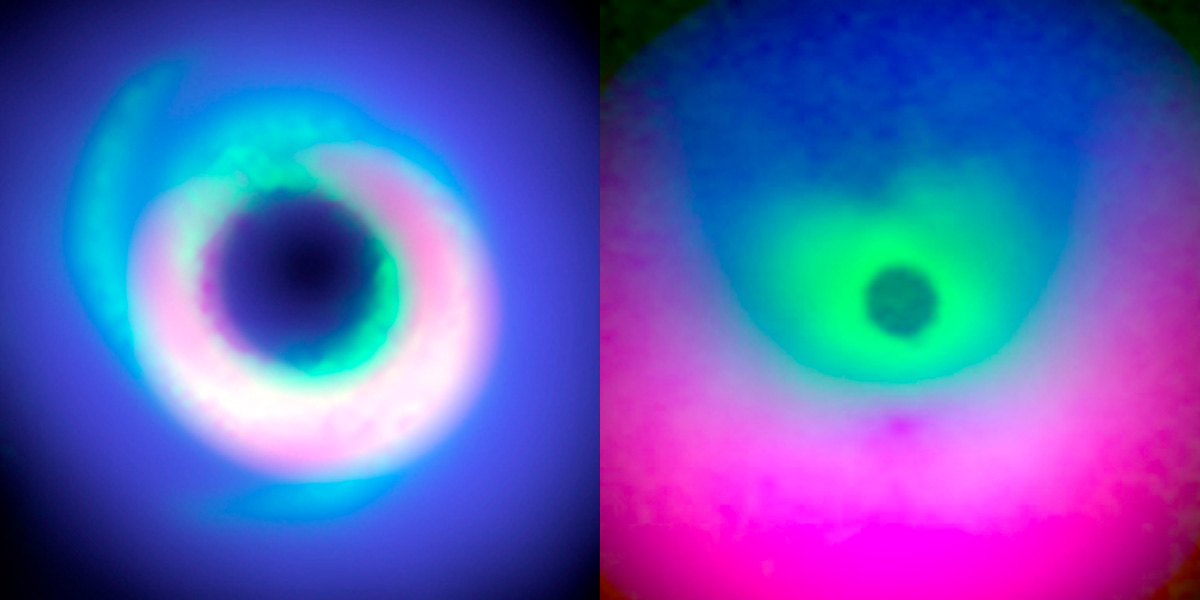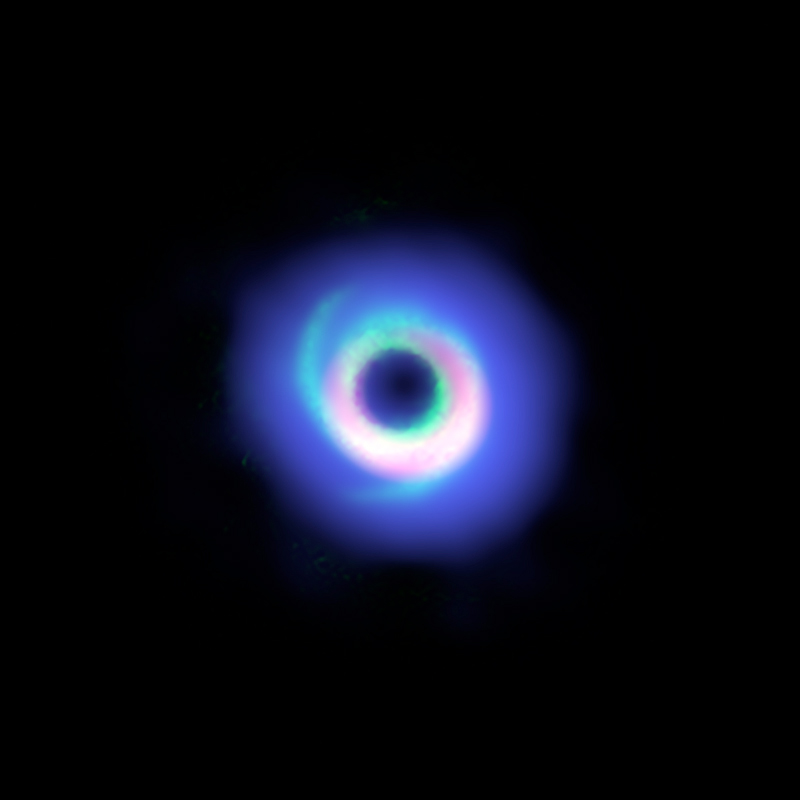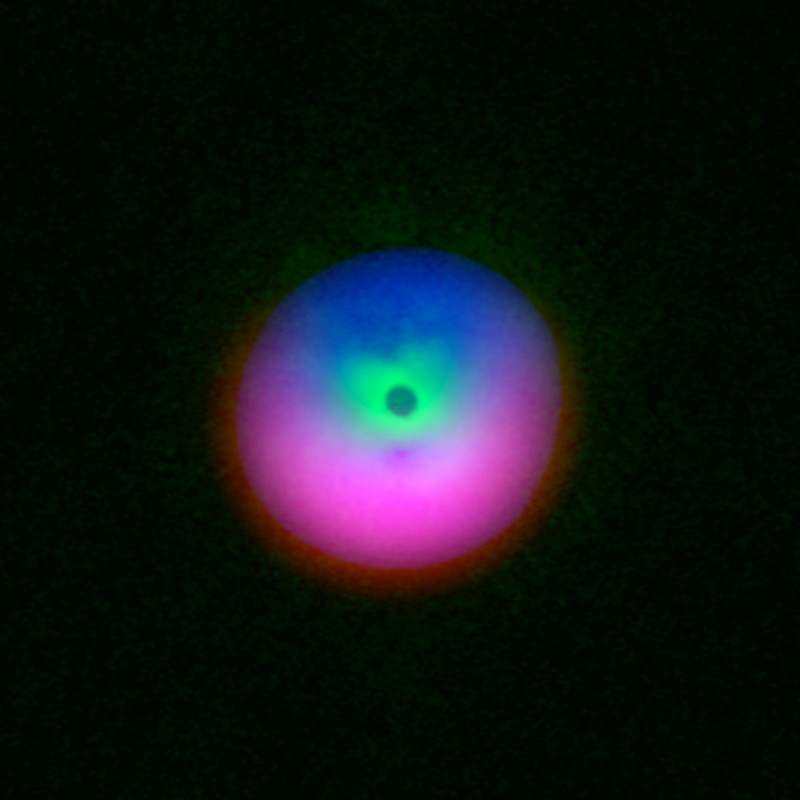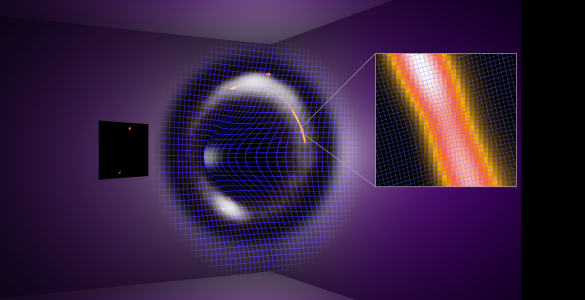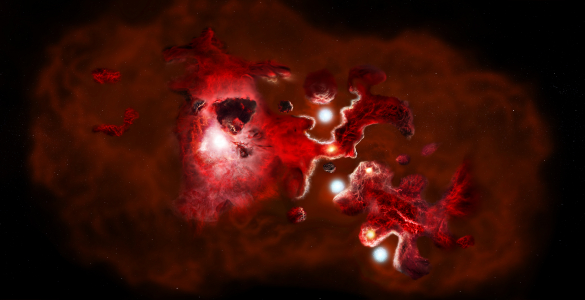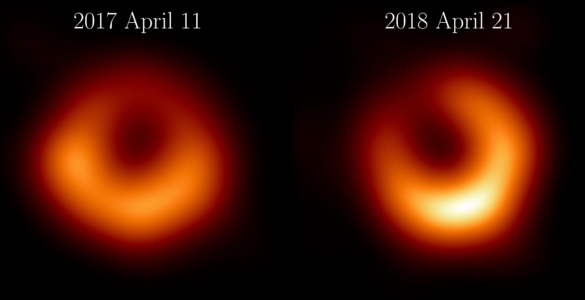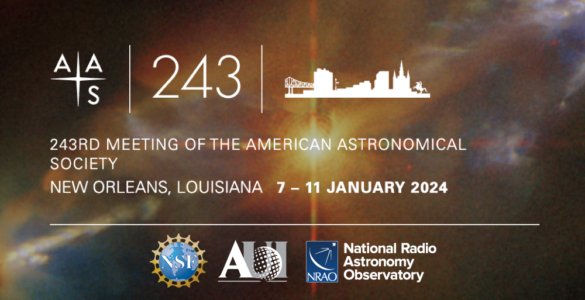Topics in This Issue:
Using NRAO's VLBA and other radio telescopes, astronomers made the most accurate measurement yet to the center of the Milky Way Galaxy.
The Green Bank Telescope's recent upgrade will help astronomers understand the context of star formation, the evolution of the Universe across cosmic time, and the origin of molecules that are essential for life.
Astronomers using ALMA have studied two massive protoplanetary disks and discovered large-scale asymmetries in the way their dust is distributed, which may be an essential step along the path to planet formation.
1. Astronomers Make Best Measurement Yet of Distance to Galactic Center
An ongoing project using NRAO’s Very Long Baseline Array (VLBA), the European VLBI Network, and the Japanese VERA project has produced the most accurate measurement yet of the distance from the Earth to the center of our Milky Way Galaxy. The new measurement — 27,190 light-years — is accurate, astronomers said, to better than 2 percent.
“That is certainly more accurate than most road-sign mileages,” said Mark Reid, of the Harvard-Smithsonian Center for Astrophysics. Improving this measurement, he added, is important because it affects scientists’ determinations of distances, masses, and brightnesses of nearly all objects in the Galaxy.
This distance measurement came as the project published more than 100 direct distance measurements to star-forming regions in the Galaxy. The long-term effort is designed to make a detailed map of the structure of our Galaxy, including the locations of its spiral arms.
Mapping our own Galaxy is difficult because we are inside it. Mapping the Milky Way requires that astronomers measure the distances to objects within it, and distance measurement has long been a difficult astronomical problem. Using the super-sharp capabilities of the VLBA and other systems, astronomers can measure the subtle shift in an object’s apparent position in the sky when viewed from opposite ends of the Earth’s orbit around the sun. This technique, called parallax, produces accurate distance measurements using simple trigonometry.
Radio telescopes allow the scientists to use this technique to determine distances to distant star-forming regions, even though those regions are obscured from optical telescopes by gas and dust. The radio technique, the scientists said, produces measurements more accurate than those anticipated in 2020 from the recently launched European satellite Gaia.
However, Gaia will target upwards of one billion stars that can be seen away from the plane of the Milky Way, making the optical and radio projects quite complementary.
The new distance measurements, and more to come from this project, will give astronomers much better figures for the basic parameters of the Milky Way. The ultimate objective is to make the most-detailed map yet of our home Galaxy and, for the first time, learn what it really looks like.
2. VEGAS Is a Good Bet to Study the Cosmos
Astronomers bet that the Robert C. Byrd Green Bank Telescope’s (GBT) new spectrometer – known as VEGAS – will be an easy win for the telescope. This upgrade to the GBT’s spectroscopic capabilities will help astronomers understand the context of star formation, the evolution of the Universe across cosmic time, and the origin of molecules that are essential for life.
Spectrometers are tools for teasing out and studying the specific wavelengths of light that are emitted naturally by objects in the cosmos. Like a prism that separates white visible light into its constituent colors, a spectrometer takes a sliver of the electromagnetic spectrum (in this case, radio light) and spreads it out. From this, astronomers detect spikes and dips in the spectrum, revealing the presence of specific atoms, molecules, and physical processes.
VEGAS is short for the VErsatile GBT Astronomical Spectrometer. It will replace all of the GBT’s current spectral-line instruments while also supporting the GBT’s new multi-pixel radio “camera” development program. VEGAS was developed by the NRAO in collaboration with the Center for Astronomy Signal Processing and Electronics Research (CASPER) at the University of California, Berkeley.
In its high-bandwidth mode, VEGAS will function like eight independent spectrometers, capable of processing radio light over a 10 GHz bandwidth. It also can process up to seven separate data feeds, each equivalent to a pixel on a digital camera. Initial observing with VEGAS began March 10, 2014.
3. Protoplanetary Disks 'Bulge' in Complex and Asymmetrical Ways
Astronomers bet that the Robert C. Byrd Green Bank Telescope’s (GBT) new spectrometer – known as VEGAS – will be an easy win for the telescope. This upgrade to the GBT’s spectroscopic capabilities will help astronomers understand the context of star formation, the evolution of the Universe across cosmic time, and the origin of molecules that are essential for life.
Spectrometers are tools for teasing out and studying the specific wavelengths of light that are emitted naturally by objects in the cosmos. Like a prism that separates white visible light into its constituent colors, a spectrometer takes a sliver of the electromagnetic spectrum (in this case, radio light) and spreads it out. From this, astronomers detect spikes and dips in the spectrum, revealing the presence of specific atoms, molecules, and physical processes.
VEGAS is short for the VErsatile GBT Astronomical Spectrometer. It will replace all of the GBT’s current spectral-line instruments while also supporting the GBT’s new multi-pixel radio “camera” development program. VEGAS was developed by the NRAO in collaboration with the Center for Astronomy Signal Processing and Electronics Research (CASPER) at the University of California, Berkeley.
In its high-bandwidth mode, VEGAS will function like eight independent spectrometers, capable of processing radio light over a 10 GHz bandwidth. It also can process up to seven separate data feeds, each equivalent to a pixel on a digital camera. Initial observing with VEGAS began March 10, 2014.







